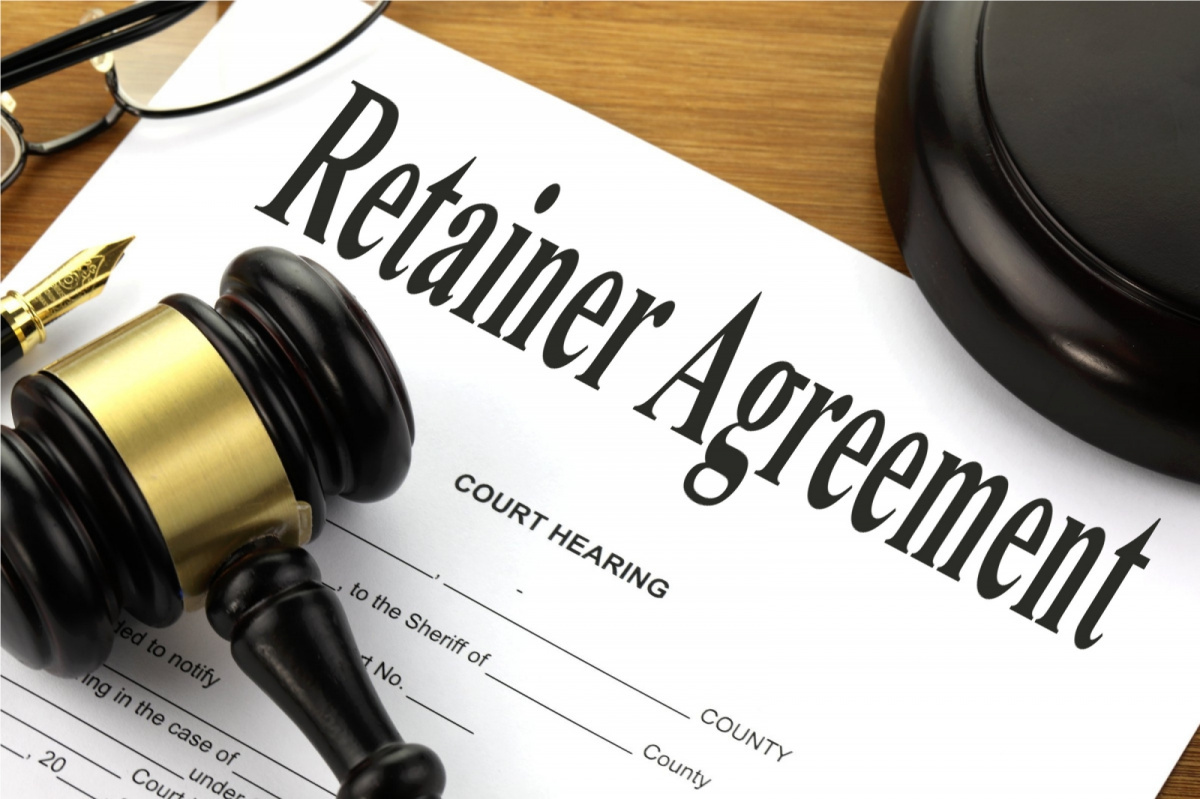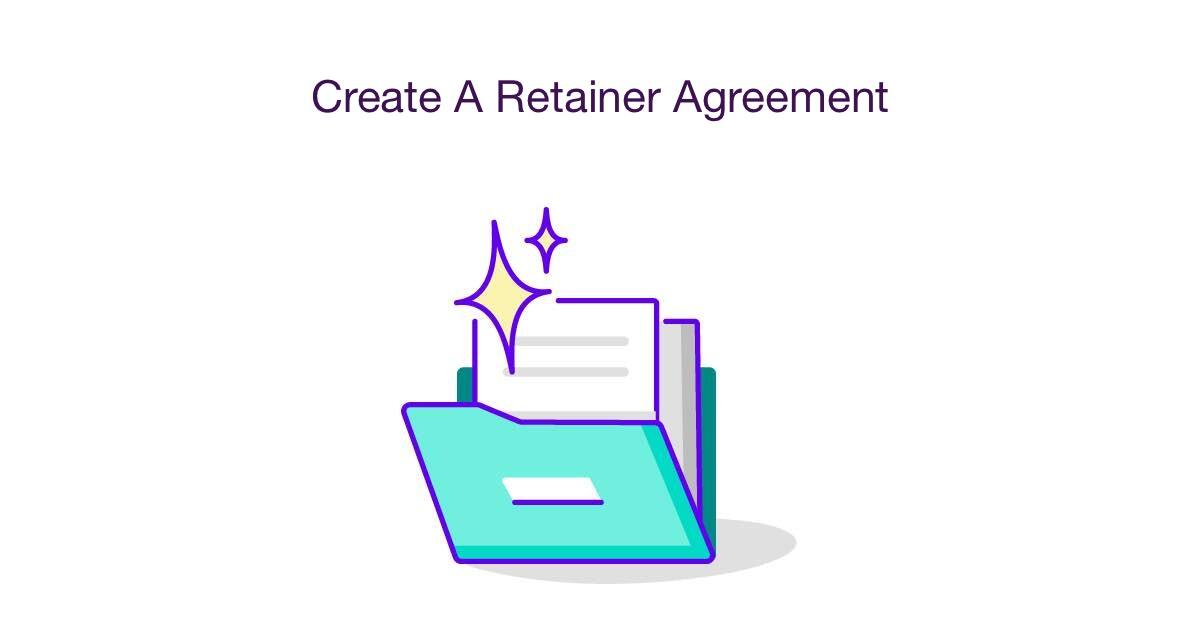Retainer agreements offer a structured path to predictable income, transforming sporadic projects into consistent revenue streams. This guide delves into the intricacies of crafting and managing these agreements, ensuring you understand their potential to generate stable income for your business.
From defining clear deliverables and payment terms to managing client relationships and projecting financial success, this comprehensive guide equips you with the knowledge and tools to leverage retainer agreements effectively. We’ll explore various agreement types, pricing models, and project management strategies, helping you maximize your income potential.
Understanding Retainer Agreements

A retainer agreement is a legally binding contract outlining the terms of a professional relationship between a client and a service provider, such as a lawyer, consultant, or freelancer. It establishes the scope of work, payment schedule, and other important details to ensure a smooth and mutually beneficial engagement. These agreements are crucial for clarity and avoid misunderstandings.This section delves into the specifics of retainer agreements, including their types, essential components, common pitfalls, and how to avoid them.
It will also help you understand the key differences between various types of retainer agreements.
Defining a Retainer Agreement
A retainer agreement, in simple terms, is a contract that establishes a professional relationship. It details the responsibilities of both the client and the service provider, the specific services to be rendered, and the payment structure. This structured approach minimizes potential conflicts and ensures mutual understanding.
Types of Retainer Agreements
Different professional services have distinct retainer agreement types. These types reflect the specific needs and deliverables of the engagement.
- Legal Retainer Agreements are common in legal practices. They often cover a wide range of legal services, from consultations to litigation. A key element is the scope of legal representation. This could include specific areas of law, the nature of the legal issue, and the expected duration of the work.
- Consulting Retainer Agreements are utilized in business consulting. They define the specific consulting services, deliverables (e.g., reports, presentations), and the payment schedule. These agreements often specify the consultant’s role in problem-solving and strategizing for the client.
- Freelance Retainer Agreements are common in freelance work. They Artikel the tasks, the timeline for completion, and the payment terms. These agreements typically involve specific projects or a defined period of work.
Deliverables and Payment Terms
Clearly defined deliverables and payment terms are essential in any retainer agreement. This clarity minimizes disputes and maintains a professional relationship.
- Deliverables should be detailed and measurable. They must clearly Artikel what the service provider will deliver and when. For example, a consulting agreement might specify the delivery of a market analysis report within a certain timeframe.
- Payment Terms must be explicit. This includes the payment schedule, the amount of each payment, and the method of payment. Payment terms should align with the project’s timeline and deliverables. A legal retainer agreement, for example, might have a monthly payment structure based on billable hours.
Common Pitfalls to Avoid
- Vague Scope of Work: A poorly defined scope can lead to disagreements about the services provided. Ensure that the agreement precisely Artikels the work expected.
- Unclear Payment Terms: Ambiguous payment terms can create friction. Detailed payment schedules and methods should be included.
- Lack of Dispute Resolution Clause: A mechanism for resolving disagreements is crucial. Include a clause that Artikels the process for resolving disputes.
- Failure to Account for Changes: Circumstances change. The agreement should include provisions for handling unforeseen circumstances and scope adjustments.
Key Differences Between Retainer Agreement Types
| Type | Purpose | Deliverables | Payment Terms |
|---|---|---|---|
| Legal | Providing legal advice and representation | Legal documents, court appearances, consultations | Hourly rates, fixed fees, or a combination |
| Consulting | Providing expert advice and strategies | Reports, presentations, recommendations, training | Monthly fees, project-based fees, or a combination |
| Freelance | Completing specific tasks or projects | Design work, writing articles, web development | Per-project fees, hourly rates, or a combination |
Structuring for Stable Income
A retainer agreement, when properly structured, can transform a project-based income model into a predictable and stable income stream. This stability is achieved by establishing a consistent revenue flow and fostering long-term client relationships. Understanding the nuances of retainer agreements is crucial to maximize their potential as a source of dependable income.Predictable income streams are achieved by establishing a consistent level of work expected and compensated in a retainer agreement.
The core principle is to design the agreement in a way that creates recurring revenue, ensuring a steady inflow of income over time. This recurring nature of retainer agreements is vital for financial stability and long-term planning.
Recurring Revenue and Retainer Agreements
Retainer agreements are designed to facilitate recurring revenue by outlining the frequency and scope of work. This is accomplished through clearly defined deliverables, consistent communication, and a commitment to client satisfaction. By consistently delivering value, clients are more likely to renew their retainer, creating a stable and predictable income stream for the provider.
Consistent Deliverables and Client Satisfaction
Client satisfaction is paramount in securing future retainers. Consistent and high-quality deliverables are key to maintaining client satisfaction. Meeting deadlines, exceeding expectations, and providing excellent communication are essential components of a successful retainer agreement. Proactive communication about progress and any potential roadblocks fosters transparency and trust, strengthening the client relationship. A satisfied client is more likely to renew their retainer, ensuring a consistent income flow.
Realistic Rates and Pricing Models
Setting realistic rates and pricing models is crucial for profitability and client acquisition. The pricing model should accurately reflect the value proposition offered. A robust understanding of the time commitment, expertise required, and the value the service provides is essential. Pricing models that fail to account for the value offered may lead to dissatisfaction or difficulty in securing future retainers.
Comparison of Pricing Models
| Model | Description | Pros | Cons |
|---|---|---|---|
| Hourly | Compensation is based on the number of hours worked. | Flexibility in adjusting to varying project needs. Easy to track time spent on specific tasks. | Potential for fluctuating income; difficulty in estimating project costs accurately. May not be appropriate for projects with a defined scope. |
| Project-Based | Compensation is fixed for a specific project with defined deliverables. | Clear understanding of project costs upfront; easier to budget. | Less flexibility for changing requirements; may not be suitable for long-term, ongoing projects. |
| Flat Rate | Compensation is a fixed amount for a set period (e.g., month, quarter). | Predictable income stream; simple to manage. Ideal for ongoing, recurring work. | Less flexibility for scope changes; may not be suitable for projects with variable hours. |
The choice of pricing model depends on the nature of the work, the client’s needs, and the service provider’s business objectives. Careful consideration of these factors is essential for establishing a sustainable and profitable retainer agreement.
Deliverable Design and Management

Defining clear and detailed deliverables is crucial for successful retainer agreements. This process ensures both parties understand the scope of work, expectations, and the timeline for completion. A well-defined deliverable structure fosters trust and transparency, minimizing potential misunderstandings and disputes.Comprehensive deliverables translate directly into tangible results for the client, demonstrating the value of the retainer agreement. This, in turn, leads to a stronger client relationship and potentially more opportunities for future work.
Effective management of deliverables, including tracking progress and addressing concerns, is vital for maintaining client satisfaction and building a reputation for reliability.
Creating Comprehensive Deliverables
Defining deliverables involves a detailed breakdown of the work to be performed. Each deliverable should be specific, measurable, achievable, relevant, and time-bound (SMART). This ensures clarity and avoids ambiguity.
- Specific deliverables: Instead of “report,” specify “monthly financial performance report, including revenue, expenses, and key performance indicators (KPIs).” This precision eliminates room for interpretation.
- Measurable deliverables: Quantify deliverables whenever possible. For example, instead of “analysis,” use “a comprehensive analysis of the financial data, resulting in a 15% reduction in operational costs, documented in a 10-page report.” This approach facilitates tracking progress.
- Achievable deliverables: Ensure the deliverables are realistic and attainable within the agreed-upon timeframe and resources.
- Relevant deliverables: Focus on deliverables directly contributing to the client’s goals. Unnecessary deliverables waste time and resources.
- Time-bound deliverables: Establish clear deadlines for each deliverable, ensuring a structured project timeline.
Examples of Deliverables
Retainer agreements encompass various types of deliverables. Examples include:
- Reports: Monthly or quarterly financial reports, market analysis reports, or project status reports.
- Consultations: Strategic planning sessions, financial modeling, or legal advice.
- Project phases: Completion of specific project milestones, such as designing a website or developing a marketing campaign.
- Training sessions: Delivering workshops or training sessions to client employees on specific topics.
Importance of Deadlines and Progress Tracking
Establishing and adhering to deadlines is crucial for managing deliverables effectively. Tracking progress allows for timely adjustments and proactive problem-solving. This approach maintains the project on schedule and within budget.
- Regular progress updates: Consistent communication regarding progress toward milestones is vital. This fosters transparency and allows for early intervention if necessary.
- Progress tracking tools: Utilize project management tools or spreadsheets to track deliverables and deadlines. This visual representation helps manage the project flow.
Effective Communication and Addressing Concerns
Open and honest communication is paramount in managing client expectations and addressing concerns. Proactive communication prevents potential issues from escalating.
- Clear communication channels: Establish clear communication channels and a consistent schedule for progress updates. This could be weekly meetings, email updates, or project management software.
- Addressing concerns promptly: When concerns arise, address them promptly and professionally. Active listening and a willingness to find solutions are key to maintaining client satisfaction.
- Documentation: Document all communication, including emails, meeting notes, and agreed-upon adjustments. This detailed record serves as a reference point.
Project Management Methodologies
Choosing the right project management methodology can significantly impact the success of a retainer agreement.
| Methodology | Description | Strengths | Weaknesses |
|---|---|---|---|
| Agile | Iterative and adaptable, focusing on flexibility and customer feedback. | Excellent for projects with evolving requirements. | Can be challenging to estimate time and resources accurately initially. |
| Waterfall | Sequential and structured, with clearly defined phases. | Good for projects with well-defined requirements. | Less adaptable to changing needs. |
| Kanban | Visual workflow management system that emphasizes continuous improvement. | Flexible and adaptable, allows for quick adjustments. | Requires discipline and constant monitoring to maintain efficiency. |
Client Relationship Management

Cultivating strong client relationships is paramount to the success of any retainer agreement-based business model. These relationships extend beyond simply fulfilling deliverables; they involve building trust, fostering understanding, and anticipating needs. Proactive communication and effective issue resolution are key to maintaining client satisfaction and encouraging repeat business. A well-managed client relationship translates into a stable and reliable income stream.Effective client relationship management ensures that clients feel valued and understood, leading to positive experiences and potentially increased future engagement.
By anticipating needs, addressing concerns promptly, and fostering open communication, businesses can cultivate loyal clients who become advocates for their services. This approach builds a foundation for long-term partnerships and predictable revenue streams.
Crucial Aspects of Client Communication
Maintaining open communication channels is vital for managing client expectations and ensuring a smooth workflow. Regular updates, clear communication about project progress, and proactive outreach demonstrates value and commitment. Active listening and a focus on understanding the client’s perspective contribute significantly to positive relationships. Addressing any concerns promptly and transparently builds trust and reinforces the value proposition of the retainer agreement.
Proactive Communication and Open Lines
Proactive communication involves anticipating client needs and proactively addressing potential issues before they escalate. This might include providing regular progress updates, anticipating potential roadblocks, and offering alternative solutions. By being proactive, businesses demonstrate their commitment to the client’s success and maintain a strong working relationship. Open lines of communication allow for direct feedback and adjustments to ensure the deliverables align with client expectations.
Addressing Potential Issues or Concerns
Addressing potential issues or concerns effectively and professionally is crucial. A pre-emptive approach, coupled with clear communication, can often prevent larger problems from arising. Establish clear communication channels and response times to ensure clients feel heard and valued. Addressing concerns promptly and transparently fosters trust and confidence. A well-defined process for escalating issues ensures that problems are resolved efficiently and effectively.
Strategies for Long-Term Client Relationships
Cultivating long-term client relationships requires consistent effort and attention. Building rapport, understanding individual client needs, and going the extra mile demonstrate value and commitment. Seeking feedback and incorporating it into future projects demonstrates a commitment to continuous improvement. Encouraging referrals and proactively seeking opportunities to strengthen the relationship fosters repeat business and enhances client loyalty.
Effective Communication Strategies
This table illustrates effective communication strategies for managing client expectations and concerns:
| Situation | Strategy | Action Steps |
|---|---|---|
| Client expresses dissatisfaction with a deliverable | Active Listening and Empathetic Response | Listen carefully to the client’s concerns without interruption. Acknowledge their feelings. Offer a sincere apology if appropriate. Collaboratively explore solutions and propose alternative approaches. |
| Client requests a change in scope | Transparent Communication and Negotiation | Acknowledge the request. Explain the potential impact on timelines and costs. Propose alternative solutions that minimize disruption while meeting the client’s needs. Document any changes and agreed-upon modifications. |
| Client misses a scheduled meeting | Proactive Follow-up and Flexibility | Send a friendly reminder. Offer alternative meeting times. Address the client’s need for flexibility, understanding the context and implications of the missed meeting. |
| Client requests a detailed progress report | Clear and Concise Reporting | Provide a clear and concise report that includes key metrics, milestones achieved, and next steps. Use visual aids to enhance understanding. |
Financial Management and Projections
Effective financial management is crucial for the success of any retainer-based business. Understanding how to calculate and project income, track expenses, and adjust pricing based on data is essential for long-term stability and profitability. This section details key strategies for building a strong financial foundation.Accurate financial projections are the cornerstone of a successful retainer agreement strategy. These projections allow for informed decision-making, proactive adjustments, and the identification of potential risks.
Understanding the financial aspects empowers you to optimize your pricing and service offerings for maximum profitability.
Calculating and Projecting Income
Accurate income projections depend on a clear understanding of your retainer agreements. Consider the scope of work, hourly rates, or project-based fees Artikeld in each agreement. Projecting income involves estimating the total hours expected to be worked over a defined period (e.g., month, quarter, year). For example, a monthly retainer of $5,000, consistently applied for a year, projects $60,000 in annual income.
Moreover, if a retainer agreement includes variable deliverables, project income based on anticipated complexity and associated time commitments. Consider the different deliverables and their associated costs. This detailed breakdown allows for more accurate forecasting and helps adjust pricing based on actual time spent on deliverables.
Tracking Expenses and Revenue
Thorough tracking of both expenses and revenue associated with retainer agreements is critical. This involves meticulously documenting all costs, from software subscriptions to travel expenses. Detailed records provide insights into profitability and highlight areas for potential cost reduction. Maintaining accurate records allows you to identify trends and make data-driven decisions regarding pricing and service offerings.
Financial Models for Forecasting Income and Expenses
Different retainer types necessitate varying financial models. A project-based retainer might use a model that breaks down expenses and revenue by project, while a monthly retainer would track expenses and revenue against a monthly budget. For example, if you have a monthly retainer for $5,000, your expenses for that month should not exceed this amount to maintain profitability.
A simple financial model for a monthly retainer agreement could include:
- Monthly Retainer Income: $5,000
- Estimated Monthly Expenses: $1,500 (e.g., software, supplies)
- Projected Monthly Profit: $3,500
Adjusting Pricing and Service Offerings
Regular analysis of financial data is key to adjusting pricing and service offerings for optimal profitability. By tracking actual expenses against projected expenses and revenue, you can identify areas where you might need to adjust your rates or offer additional services to enhance profitability. Analyze data regularly to adjust pricing based on the market and client demands. Also, consider adjusting your service offerings based on client needs and profitability.
Financial Tools for Managing Retainer Agreements
Implementing appropriate financial tools can significantly streamline the management of retainer agreements.
| Tool | Description | Features | Cost |
|---|---|---|---|
| FreshBooks | Cloud-based accounting software | Invoicing, expense tracking, client management | Subscription-based |
| Xero | Cloud-based accounting software | Invoicing, expense tracking, financial reporting | Subscription-based |
| QuickBooks | Accounting software | Invoicing, expense tracking, financial reporting | Subscription-based or one-time purchase |
| Zoho Books | Cloud-based accounting software | Invoicing, expense tracking, financial reporting | Subscription-based |
Legal Considerations
![Free Printable Retainer Agreement Templates [Word, PDF] Free Printable Retainer Agreement Templates [Word, PDF]](https://hackly.web.id/wp-content/uploads/2025/09/retainer-agreement-template.jpg)
Retainer agreements, while crucial for establishing clear expectations and financial stability, must be meticulously crafted to safeguard both the client and the service provider. Understanding the legal implications is paramount to avoiding potential disputes and ensuring a mutually beneficial relationship. Careful attention to detail and proactive legal counsel are essential for navigating the complexities of these agreements.
Legal Implications of Retainer Agreements
Retainer agreements establish a legally binding contract between the parties involved. Breaches of this contract can lead to legal action, impacting both the client’s ability to receive services and the provider’s potential income. These implications are multifaceted, encompassing intellectual property rights, payment terms, and service deliverables.
Importance of Seeking Legal Counsel for Contract Review
Independent legal counsel is crucial for reviewing retainer agreements. An attorney can identify potential loopholes, ambiguities, or unfavorable clauses that could harm either party in the future. This proactive approach ensures the agreement is legally sound and protects the interests of all involved. This is especially important for complex projects or those involving high stakes. A legal professional can help ensure the contract aligns with relevant laws and regulations.
Understanding the Terms and Conditions
Thorough comprehension of the terms and conditions is vital. Clarity regarding deliverables, payment schedules, termination clauses, and dispute resolution mechanisms prevents misunderstandings and future conflicts. Each party must understand their responsibilities and rights Artikeld in the agreement. For example, a lack of clarity on the scope of work can lead to disputes regarding payment or the completion of specific tasks.
Common Legal Issues Related to Retainer Agreements and Mitigation Strategies
Several common issues can arise in retainer agreements. One such issue is ambiguous language, which can lead to disputes over the interpretation of specific clauses. Another is the absence of a clear dispute resolution mechanism, making it difficult to address disagreements. A well-drafted agreement should clearly define the scope of work, payment terms, and intellectual property ownership.
To mitigate these issues, meticulous attention to detail in drafting the agreement is crucial, along with employing clear and concise language.
Sample Retainer Agreement Clause on Intellectual Property Rights
“All intellectual property rights, including but not limited to copyrights, patents, trademarks, and trade secrets, developed or created by [Service Provider] during the term of this agreement, shall remain the exclusive property of [Service Provider], unless otherwise explicitly agreed upon in writing. [Client] acknowledges and agrees that [Service Provider] retains all rights to use, reproduce, and distribute any materials created in the performance of this agreement.”
This clause explicitly defines intellectual property ownership, preventing disputes over creative outputs. Clear specification of ownership is vital for safeguarding the interests of both parties. For example, if the project involves developing software, this clause would clearly delineate who owns the intellectual property rights associated with the software.
Summary

In conclusion, a well-structured retainer agreement is a powerful tool for building stable income. By understanding the different types of agreements, establishing clear deliverables, and managing client relationships effectively, you can transform your business into a consistent revenue generator. This guide has provided a framework for navigating the complexities of retainer agreements and achieving financial stability.